
General Education Biology Course for non-science majors
- Subject:
- Biology
- Life Science
- Material Type:
- Full Course
- Provider:
- MassBay Community College
- Author:
- Marion Bank
- Date Added:
- 05/08/2019

General Education Biology Course for non-science majors

Pictures of fungi for a general biology course.

This course is a basic study of the structure and functioning of the human body. Emphasis will be placed on the interrelationships among the systems. This course introduces the major chemical and biological principles through the study of the human body. Note: This course may be taken alone as a 3 credit biology course OR in conjunction with BIO102 Human Biology Laboratory as a 4 credit biology course.
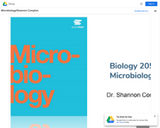
This course is designed to be an introduction to the biology of microorganism. The emphasis is on the
specific properties of microorganisms and their relation to disease.
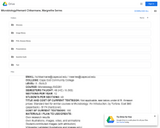
Full course in microbiology.
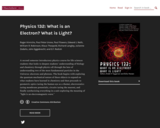
A second semester introductory physics course for life sciences students that looks to deepen students' understanding of biology and chemistry through physics all through the lens of understanding two of the most fundamental particles in the Universe: electrons and photons. The book begins with exploring the quantum mechanical nature of these objects to expand on what students have learned in chemistry and then proceeds to geometric optics (using the human eye as a theme), electrostatics (using membrane potentials), circuits (using the neuron), and finally synthesizing everything in a unit exploring the meaning of "light is an electromagnetic wave."
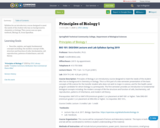
Syllabus for an introductory course designed to meet the needs of the student who has no background in chemistry or biology. This course uses an open textbook, Biology 2e, from OpenStax.

Word Count: 52193
ISBN: 978-1-945764-26-4
(Note: This resource's metadata has been created automatically by reformatting and/or combining the information that the author initially provided as part of a bulk import process.)
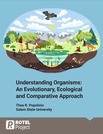
This resource has been prepared for one semester of an introductory-level college biology course with foundational themes of evolution, ecology, and comparative body systems. The first unit explores the origins and defining characteristics of living things and compares the earliest and simplest life forms with more complex cellular life. One of the common features of all life is that it requires energy; the next section explores the why and how of energy acquisition and relationships between the metabolic pathways. After a primer on photosynthesis and energy production via respiration, the next few sections delve into the form and physiology of plants and animals, focusing on water and food transport in plants, and in the respiratory, circulatory, digestive and reproductive systems of diverse animals. These systems were selected to serve as an introduction to animal physiology because they can be easily interleaved with other core course concepts such as energy flow and nutrient cycling through ecosystems, population genetics, bioenergetics, or speciation. The final sections of the text provide a basis for understanding evolutionary change, biodiversity, and the history and relatedness of life on Earth.
Understanding Organisms is an adapted textbook remixed from a variety of openly licensed sources, with additional content introduced by the author. Throughout the chapters, embedded media and special content boxes linking a diverse collection of web-based resources (e.g., popular science articles, podcasts, interactive tutorials, simulations, etc.) promote engagement and independent learning. Many of these highlight the work of biologists from diverse backgrounds or make connections between the biology content and real-world concerns. Chapter content was adapted to improve accuracy and inclusivity in topics such as sexual reproduction, sex determination, and sexual selection. Each section includes interactive H5P content in the form of no-stakes practice activities with instant feedback that allows students to self-check their understanding while engaging with the text.